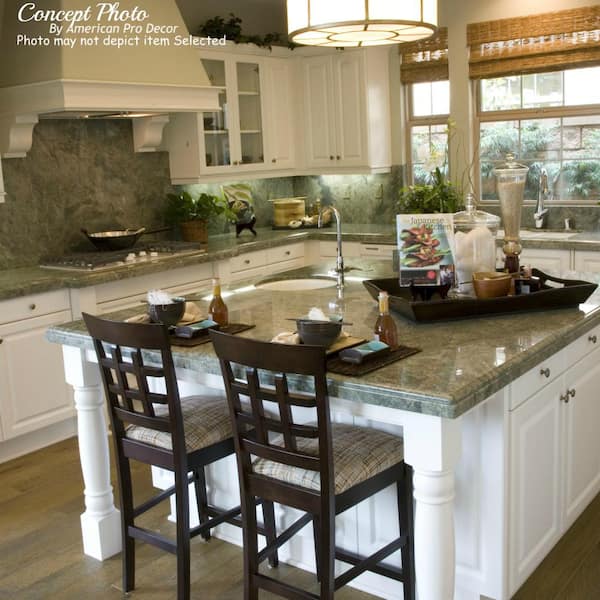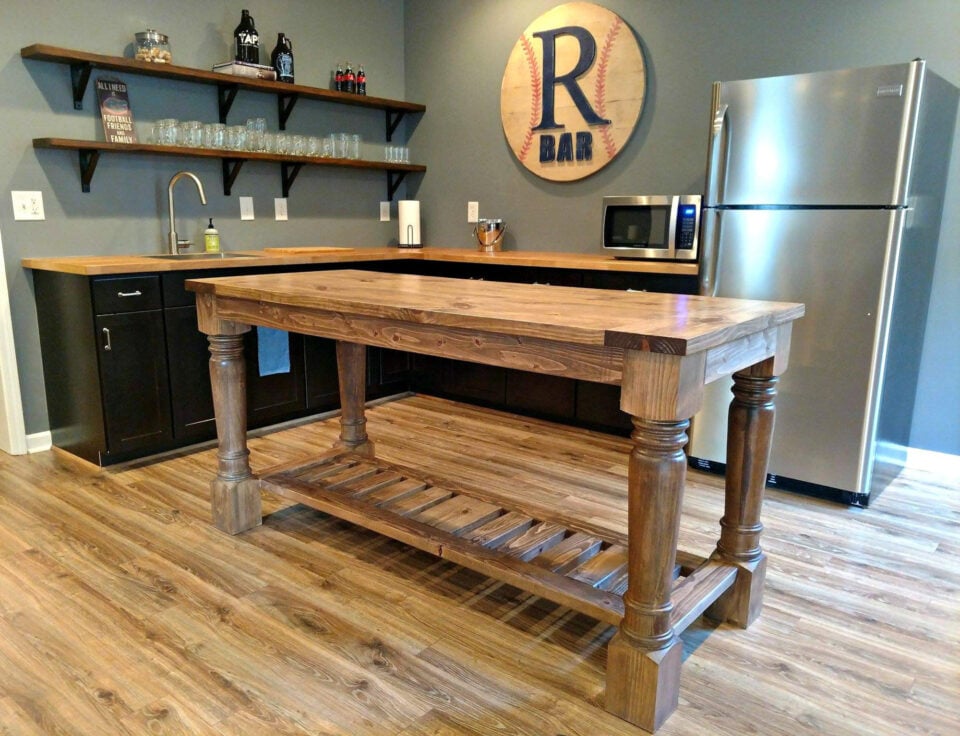The Top Kitchen Island Leg Styles to Enhance Any Kind Of Layout Aesthetic
The Top Kitchen Island Leg Styles to Enhance Any Kind Of Layout Aesthetic
Blog Article
Checking Out the Vital Features of a Cooking Area Island Leg for Your Culinary Space
The kitchen area island serves as a main hub in any kind of cooking area, and the option of leg style is crucial in enhancing both its functionality and aesthetic appeal. Recognizing the vital features of kitchen area island legs-- consisting of material options, layout styles, and security variables-- can dramatically affect the general experience within the kitchen area.
Relevance of Kitchen Area Island Legs
Kitchen area island legs play an essential duty in both the capability and looks of a kitchen area room. They not only support the weight of the island but likewise boost the overall style, contributing to the kitchen area's visual charm. The option of legs can determine the design of the kitchen, be it contemporary, traditional, or rustic.
Functionally, robust and correctly created legs guarantee stability, permitting the secure use of the island for various jobs such as food preparation, eating, or enjoyable. Strong legs avoid changing and tottering, offering a trustworthy surface area for everyday activities.
In addition, the height and positioning of the legs can affect the convenience level for those seated at the island. A well-considered height can accommodate bar feceses or chairs, promoting an inviting setting for events.
Along with these practical considerations, cooking area island legs can act as a focal factor in the area (kitchen island leg). Attractive or distinctly made legs can boost the layout visual, making the island a focal point. Therefore, selecting the ideal kitchen island legs is vital for stabilizing form and feature in any kind of culinary room
Material Options for Legs
Selecting the appropriate material for kitchen area island legs significantly affects both resilience and layout. Usual product choices consist of timber, steel, and stone, each offering unique benefits.
Wood is a popular selection due to its heat and flexibility. It can be conveniently tailored to match numerous decoration styles, from rustic to contemporary. Hardwoods like oak and maple supply superb stamina and durability, while softer timbers can be more vulnerable to tear and put on.
Metal legs are favored for their smooth, modern visual. kitchen island leg. Stainless-steel and aluminum are not just durable however additionally immune to corrosion and deterioration, making them perfect for kitchen area environments. They can produce an industrial look and are frequently offered in various finishes to complement various other kitchen area components
Stone legs, such as granite or marble, add an aspect of luxury and security. While larger than other products, they offer phenomenal longevity and can withstand significant weight. They might need additional assistance to make sure appropriate equilibrium.
Ultimately, the selection of product must straighten with both useful demands and the general design vision of the cooking area space, ensuring that the island legs boost both utility and looks.
Design Designs to Take Into Consideration
What design styles should be considered when choosing legs for a cooking area island? The selection of leg style significantly influences the general aesthetic of your culinary room. For a modern kitchen, sleek and minimalistic leg designs, such as stainless steel or geometric shapes, can enhance the modern-day allure, offering a clean and uncluttered look.
In comparison, typical kitchens gain from traditional designs such as transformed or carved wooden legs, which include warmth and personality. These choices usually feature detailed details that match vintage furnishings. For a rustic ambiance, take into consideration legs made from redeemed timber or functioned iron, which bring an organic, natural quality to the room.
If you lean in the direction of a commercial theme, robust steel legs with a troubled finish might be optimal, giving an edgy yet innovative touch. Furthermore, farmhouse design kitchen areas can incorporate chunky legs that evoke a sense of toughness and homeliness.

Elevation and Security Factors
The elevation and stability of a cooking area island are critical elements that directly impact its functionality and individual experience. A suitable cooking area island leg must provide sufficient height to fit a selection of tasks, from cooking to informal dining. Commonly, kitchen area islands stand between 36 to 42 inches high, lining up with standard counter and bar elevations. This range ensures convenience for customers while doing different activities, therefore enhancing the total usability of the room.
Stability is similarly important, especially as kitchen islands usually offer as centerpieces in cooking environments. A stable leg design reduces moving and tottering, which can result in accidents or discomfort during usage. Products such as strong wood, metal, or a combination thereof are frequently used to accomplish the required strength. The leg's attachment to the island's base should be protected, ensuring long life and durability versus the wear and tear of day-to-day usage.
Personalization and Accessories
Modification options and devices for cooking area island legs can substantially improve both the aesthetic charm and performance of the room. Property owners can pick from a variety of materials, consisting of stone, wood, and steel, permitting seamless integration with existing kitchen area decor. The choice of coating-- be it an all-natural tarnish, paint, or powder finish-- additional individualizes the look, making certain that the island enhances the overall style motif.
In addition to material and surface, homeowners might additionally explore the consolidation of accessories such as attractive braces, flexible feet, or integrated shelving. Braces can supply additional assistance while adding to a rustic or modern visual. Adjustable feet are particularly helpful for unequal flooring, making certain the island continues to be stable and level, which is crucial for both security and usability.

Final Thought
To conclude, kitchen island legs offer a vital function in giving stability and improving the overall visual of the culinary space. The selection of materials and design styles adds to both capability and visual allure, while factors to consider of elevation and stability make certain sensible use. Customization choices and accessories can raise the cooking area island, making it an unique focal factor within the home. Thus, careful consideration of these attributes is vital for an effective kitchen area layout.
The cooking area island offers as a central center in any kind of culinary space, and the selection of leg style is essential in enhancing both its functionality and visual allure. Comprehending the essential features of cooking area island legs-- including material options, style styles, and security elements-- can look at this web-site dramatically impact the total experience within the kitchen.Kitchen area island legs play a vital role in both the functionality and aesthetics of a kitchen area area.What design styles should be taken into consideration when selecting legs for a kitchen island?In verdict, cooking area island legs serve an essential duty in offering stability and enhancing the general visual of the culinary area.
Report this page